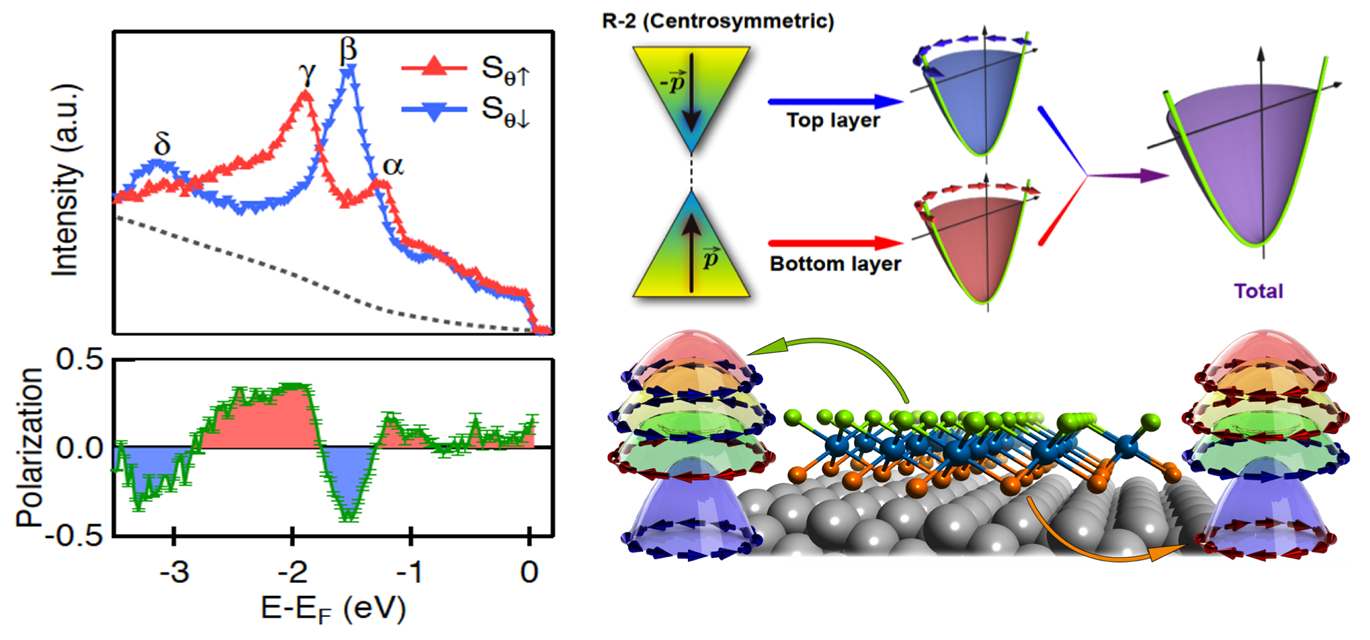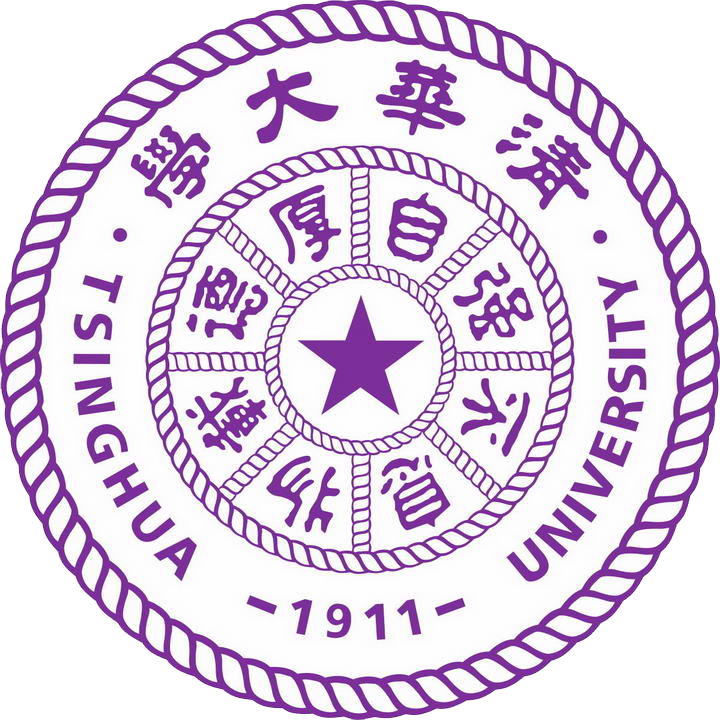Research / Topological materials
>> Type-II Weyl and Dirac semimetal
>> Experimental realization of type-II Weyl semimetal, topological phase transition and superconductivity
>> Type-II Dirac fermions in PtTe2 and PtSe2
>> Atomically thin PtSe2, PtTe2 films and spin-layer locking by local Rashba effect
>> Type-II Weyl and Dirac semimetals [Back To Top]
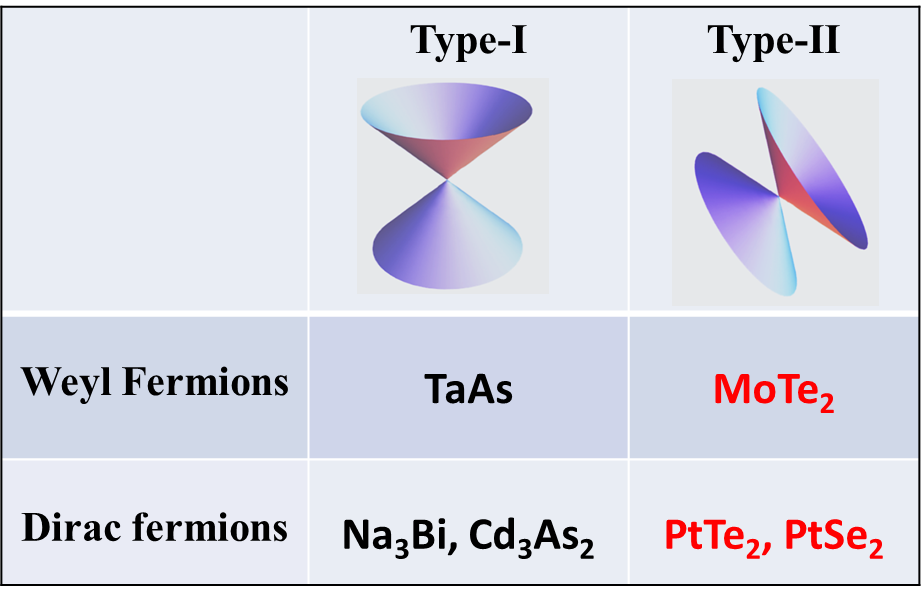
>> Experimental realization of type-II Weyl semimetal, topological phase transition and superconductivity [Back To Top]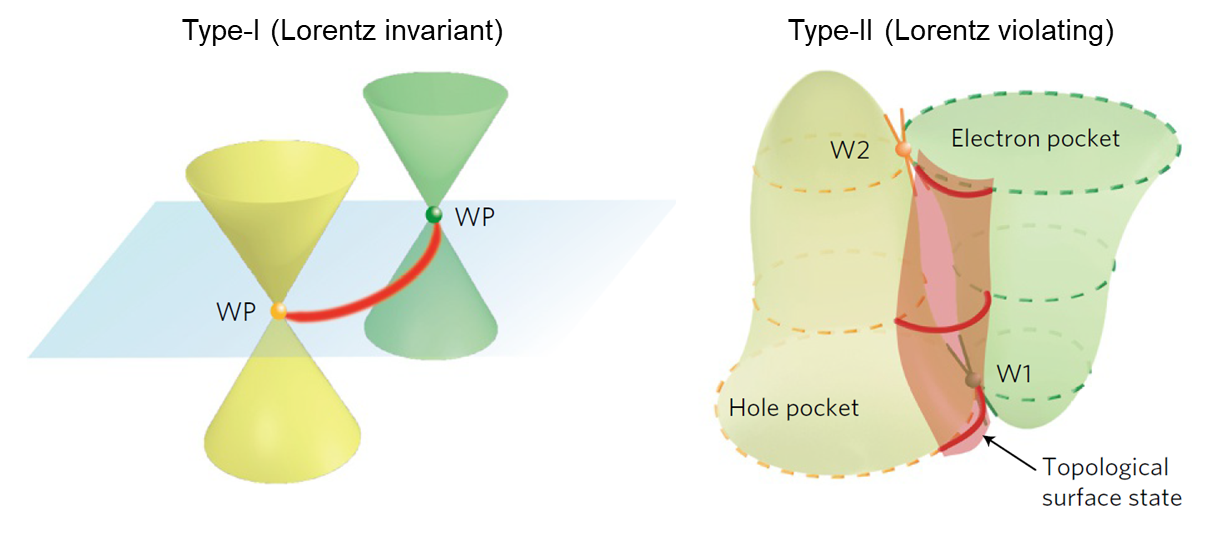
Three dimensional Weyl and Dirac semimetals host the condensed matter physics counterpart of relativistic Weyl or Dirac fermions. In condensed matter physics, the low energy excitations are quasiparticles and new types of Weyl or Dirac fermions that do not obey the Lorentz invariance can also exist. We reported the first experimental observation of type-II Weyl fermions in MoTe2. The topological surface states are observed by ARPES and quasiparticle interference (Nat. Phys. 12, 1105-1110 (2016).). Moreover, a phase transition from 1T’ to Td phase is revealed by Raman spectroscopy, suggesting a topological phase transition (Nat. Commun. 7, 13552 (2016).).
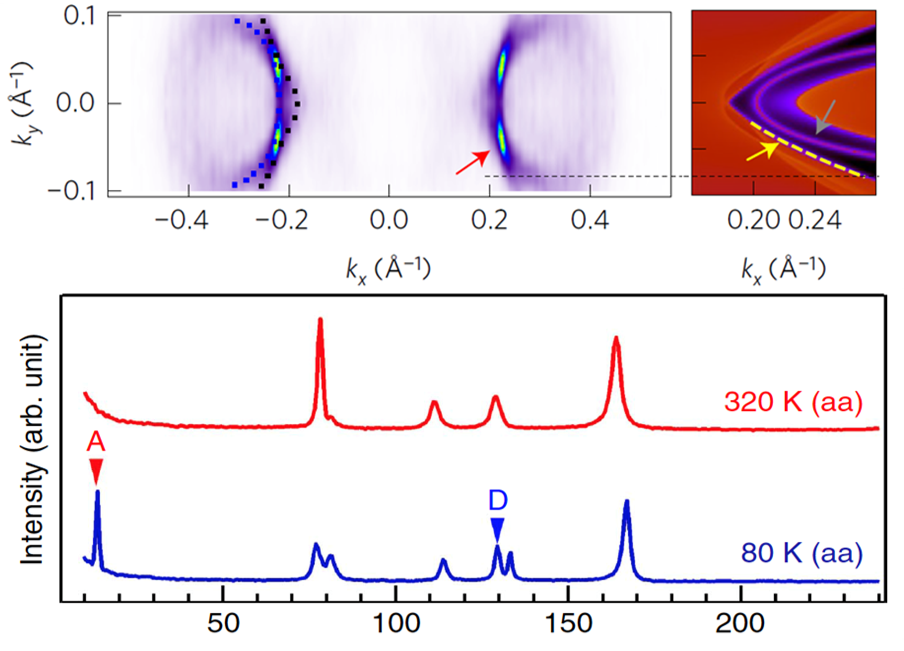
Recently, we have succeeded in intercalating the cations from ionic liquid into MoTe2 and WTe2 to form inorganic-organic hybrid materials (Sci. Bull. 65, 188 (2020)). The intercalation leads to an expanding interlayer spacing with decoupled MoTe2 and WTe2 layers, and the electronic structure is expected to change from a three-dimensional Weyl semimetal to many layers of two-dimensional quantum spin Hall insulators. More importantly, such intercalation can also induce superconductivity with a transition temperature of 7.0 K for the intercalated MoTe2 and 2.3 K for the intercalated WTe2.
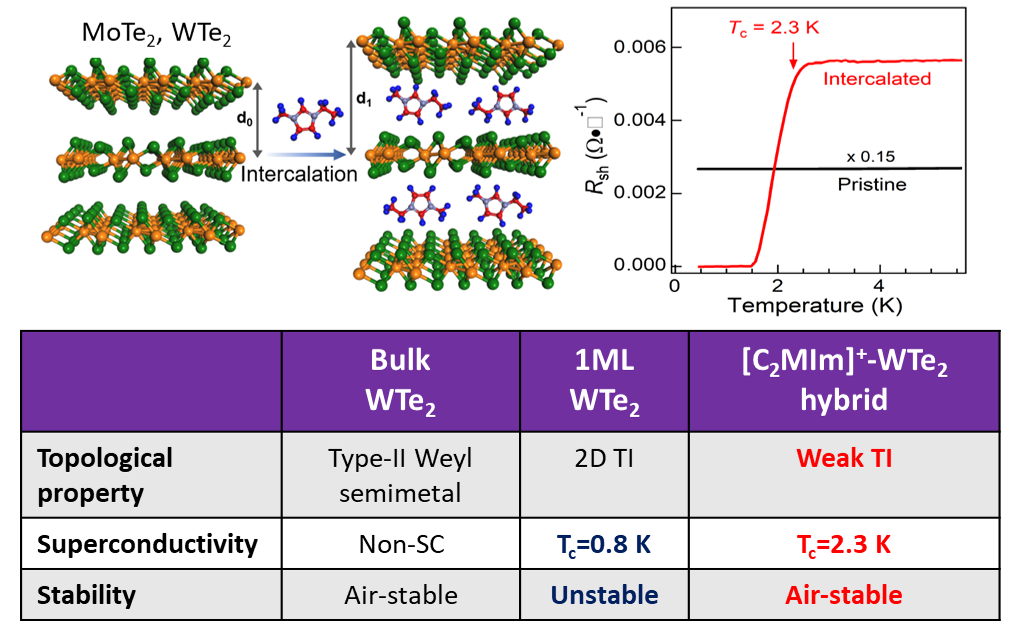
For more details, see references:
1. “Experimental observation of topological Fermi arcs in type-II Weyl semimetal MoTe2”, Nat. Phys. 12, 1105-1110 (2016).
2. “Raman signatures of inversion symmetry breaking and structural phase transition in type-II Weyl semimetal MoTe2”, Nat. Commun. 7, 13552 (2016).
3. “Enhancement of superconductivity in organic-inorganic hybrid topological materials”, Sci. Bull. 65, 188 (2020). [To Overview]
>> Type-II Dirac semimetals [Back To Top]
• Type-II Dirac fermions in PtTe2 and PtSe2

We extend the concept of type-II semimetal to include Dirac fermions. Moreover, we found that PtTe2 and PtSe2 host type-II Dirac fermions with highly tilted Dirac cones along the out-of-plane direction, and the Dirac point is protected by the crystal symmetry. This is confirmed by ARPES measurements of PtTe2 (Nat. Commun. 8, 257 (2017).) and PtSe2 (Phys. Rev. B 96, 125102 (2017).) as well as first principles calculations (Phys. Rev. B 94, 121117 (2016).).
For more details, see references:
1. “Lorentz-violating type-II Dirac fermions in transition metal dichalcogenide PtTe2”, Nat. Commun. 8, 257 (2017).
2. “Experimental evidence of type-II Dirac fermions in PtSe2”, Phys. Rev. B 96, 125102 (2017).
3. "Type-II Dirac Fermions in the Transition Metal Dichalcogenide PtSe2 Class", Phys. Rev. B 94, 121117 (2016).
[To overview]
• Atomically thin PtSe2, PtTe2 films and spin-layer locking by local Rashba effect

In the past few years, we have applied a few methods for growing atomically thin PtSe2 and PtTe2 films, including direct selenization (Nano Lett. 15, 4013 (2015).), MBE (2D Mater. 4, 045015 (2017)., Sci. Bull. 34, 1044 (2019).), and a modified selenization method for large scale films and phase control (Nano Res. 14, 1663 (2021).). Moreover, the evolution of electronic structure with sample thickness is revealed by ARPES measurements, and a transition of electronic structures from bulk topological semimetal to a 2D semiconductor (2D Mater. 4, 045015 (2017)., Sci. Bull. 34, 1044 (2019).).
